#Indian Health Ministry
Text
What is the Ministry of Health and Family Welfare?
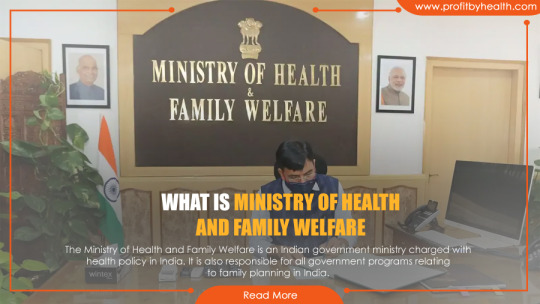
The Ministry of Health and Family Welfare is an Indian government ministry responsible for health policy in the country. It is also in charge of all government family planning programs in India. The Ministry of Health and Family Welfare organizes numerous programs, including the World Health Organization (WHO).
for more information: http://www.profitbyhealth.com/
#Asia Regional Office#Country Cooperation Strategy#Health#health agency#health issue#health policy#health professionals#health trends#healthcare#healthcare services#healthy body#healthy lifestyle#Indian government ministry#Mental health day#Ministry of Health and Family Welfare#Physical Activity#Primary Health Care#state of health#WHO#World Health Day#World Health Organization
0 notes
Text
गाजीपुर सीएमओ और आर पी डायग्नोस्टिक सेंटर का मामला पहुंचा न्यायालय
गाजीपुर सीएमओ और आर पी डायग्नोस्टिक सेंटर का मामला पहुंचा न्यायालय
The matter of Ghazipur CMO and RP Diagnostic Center reached the court
गाजीपुर(आज़ाद-समाचार)। योगी सरकार के शासन में जब पीड़ित को न्याय नहीं मिला तो आखिरकार मामला न्यायालय तक जा पहुंचा।ज्ञात हो कि पीड़ित नीरज यादव निवासी मिरदादपुर, गाजीपुर द्वारा सीएम, डीएम और सीएमओ से लिखित शिकायत 23 मई को विशेश्वरगंज स्थित आर पी डायग्नोस्टिक सेंटर द्वारा मरीज रेखा यादव पत्नी नीरज यादव को फर्जी पित्त में पथरी…

View On WordPress
0 notes
Text
#school#student#icmr#education#college#indian job#icmr ncdir bengaluru#icmr niv#health ministry#icmr assistant recruitment 2022#icmr survey#icmr recruitment 2022
1 note
·
View note
Text
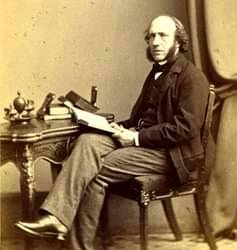

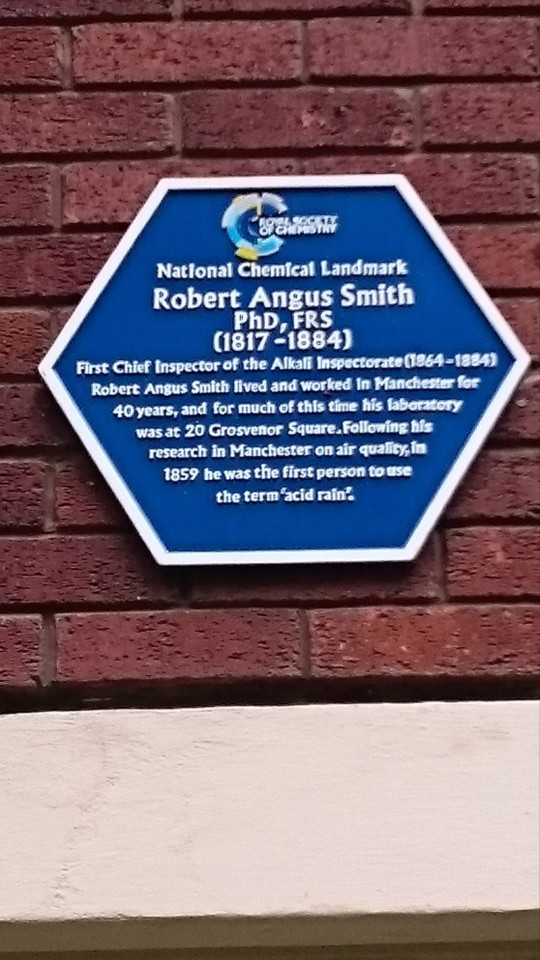
15th February 1817 saw the birth in Glasgow of Robert Angus Smith.
You may not have heard of him, or maybe you read about him in my previous post? Anyway we have all heard of acid rain, defined by National Geographic magazine thus: “Acid rain describes any form of precipitation that contains high levels of nitric and sulfuric acids. It can also occur in the form of snow, fog, and tiny bits of dry material that settle to Earth.”
The words “acid rain” were coined as long ago as 1859 by Angus Smith, who seven years earlier had made the discovery that northern cities across Britain were suffering from rainfall that contained heavy pollutants that were the result of the burning of coal that was rich in sulphur. His research found that the worst-affected city was his home town of Glasgow.
Robert Angus Smith was born in Pollokshaws the seventh son and 12th child of John Smith, originally from Ayrshire, and his wife Janet, daughter of James Thomson who owned a mill at Strathaven in Lanarkshire.
His elder brother John was a big influence on Angus’s life. John eventually became a senior teacher at Perth Academy, and was himself a scientist who would research theories on colour and light. He encouraged his younger brother to read the works of Joseph Priestley, the pioneering English chemist, and Angus Smith was greatly influenced by Priestley’s writings.
He attended Glasgow University from the age of 13, apparently to prepare for a career in the Church of Scotland ministry, but he left without graduating and then became a tutor to families, first in Scotland and then in England. In 1839 he accompanied the Bridgeman family to Germany where he remained to study under the Professor Justus Liebeg, gaining his PhD in 1841.
On returning to England he took a post at Manchester Royal Institution as assistant to Lyon Playfair, an Indian-born Scot and a scientist and politician.
Playfair passed on his own interest in the sanitation of towns and cities to Angus Smith, who left the Institution to set up in business as an analytical chemist. As concern grew about pollution, his services were in demand, and in one famous experiment he waited until a crowded room had emptied then collected the residue on windows to prove that human breath exuded not just carbon dioxide but organic matter dangerous to health.
Smith once graphically described the effects of Manchester’s polluted atmosphere, in a letter to the Manchester Guardian published on November 2, 1844.
He wrote: “Coming in from the country last week on a beautiful morning, when the air was unusually clear and fresh, I was surprised to find Manchester was enjoying the atmosphere of a dark December day… Those who would defend such evils, who would remain careless as long as any probable cause is unremoved, must surely be devoid not only of mercy, but of clear perception and of good taste. The gloominess of uncleanness is everywhere around us.”
In 1851 he began the research that would make him the “father of acid rain” as he is often known. Smith proved that sulphur compounds in the air of towns and cities were the result of burning coal and coke transported in air and rainwater, and even as the industrial revolution was bringing more and more factories into being, Smith was arguing that manufacturers should be held responsible for their pollution.
He investigated poor housing and water quality, and published numerous papers that formed the basis of the developing science of environmental chemistry. One report on the problems of pollution for the Royal Mines Commission was particularly devastating in its scientific indictment of the polluters.
Smith was called as an expert witness in a court case over factory and mine pollution and his testimony was convincing. Consequently when the British Government decided to legislate – in the Alkali Act of 1863 – to try and cut pollution from mining and manufacturing, there was really only one man to turn to as the first chief of the alkali inspectorate and thus Smith spent much of the next two decades transforming attitudes to pollution.
In 1872 Smith published his Air and Rain, the beginnings of a Chemical Climatology, in which he collected the result of his experiments. It proved how ground-breaking his work had been.
With honorary degrees from both Glasgow and Edinburgh University, Angus Smith was honoured in his own lifetime. His health declined badly in his later years and he died at at Colwyn Bay, North Wales, on May 12, 1884, being buried in the churchyard of St Paul’s, Kersal, Manchester.
He was paid a most generous tribute in the first edition of Nature magazine following his death: “For upwards of 40 years he laboured unceasingly to show how chemistry might minister to the material comfort and physical well-being of men — not in the manufacture of new compounds useful in the arts, or in the establishment of new industries – but in raising the general standard of the health of communities by checking or counteracting the evils which have followed in the train of that enormous development of the manufacturing arts which is the boast of this century.
“In his true vocation, as the chemist of sanitary science, Smith worked alone, and we have yet to find the man on whom his mantle has fallen."
12 notes
·
View notes
Text
India has urged its citizens travelling to or living in Canada to "exercise utmost caution".
The advisory comes a day after tensions escalated between the countries with each expelling a diplomat from the other side.
Canada said it was investigating "credible allegations" linking the Indian state with the killing of a Sikh separatist leader.
India strongly denied this, calling the allegations "absurd".
Analysts say relations between the countries, which have been strained for months, are now at an all-time low.
How India-Canada ties descended into a public feud
Why Western nations fear India-Canada row
On Wednesday, India's foreign ministry said it issued the advisory "in view of growing anti-India activities and politically-condoned hate crimes and criminal violence in Canada".
The Indian government has often reacted sharply to demands by Sikh separatists in Western countries for Khalistan, or a separate Sikh homeland.
The Khalistan movement peaked in India in the 1980s with a violent insurgency centred in Sikh-majority Punjab state.
It was quelled by force and has little resonance in India now, but is still popular among some in the Sikh diaspora in countries such as Canada, Australia and the UK.
Canada has the highest number of Sikhs outside Punjab and has seen several pro-Khalistan protests and demonstrations. In June, reports said India had raised a "formal complaint" with Canada about the safety of its diplomats there.
In Wednesday's statement, Delhi said that some recent threats were directed at its diplomats and some Indians "who oppose the anti-India agenda".
"Indian nationals are, therefore, advised to avoid travelling to regions and potential venues in Canada that have seen such incidents," it said.
Prime Minister Justin Trudeau said on Monday that intelligence agencies were investigating whether "agents of the government of India" were involved in the killing of Hardeep Singh Nijjar, a Canadian citizen - India had designated him a terrorist in 2020.
Nijjar was shot dead in his vehicle by two masked gunmen outside a Sikh temple on 18 June in British Columbia.
"Any involvement of a foreign government in the killing of a Canadian citizen on Canadian soil is an unacceptable violation of our sovereignty," Mr Trudeau told the Canadian parliament on Monday.
India reacted strongly, saying that Canada was trying to "shift the focus from Khalistani terrorists and extremists" who had been given shelter there.
Some Indian media reports claimed the statement from Delhi followed a similar Canadian advisory for its citizens travelling to India. Canada's government confirmed its travel advice for India had been updated on Monday but said it had been "as part of pre-scheduled and routine maintenance in the section on travel health information".
"No new risk information has been added to the India TAA [Travel Advice and Advisories] page," a spokesperson told the BBC. Ottawa's advisory asks its citizens to "exercise a high degree of caution" because of the "risk of terrorist attacks throughout" India.
5 notes
·
View notes
Text
Brazil launches operation in Javari Valley where Guardian reporter and pro-Indigenous activist were killed
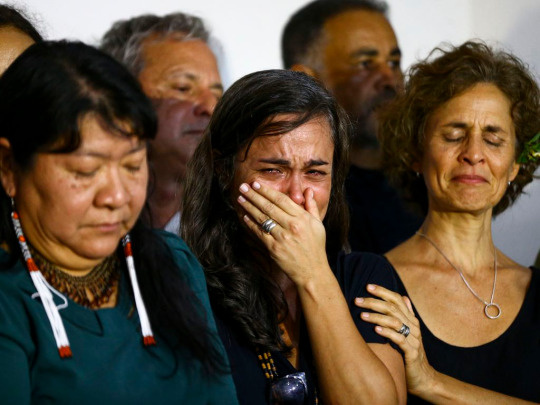
Eight and a half months after the brutal murders of British journalist Dom Philips and Brazilian indigenous rights activist Bruno Pereira, Brazil’s government launched an operation to remove illegal miners from the Javari Valley Indigenous territory where the two were killed.
On Monday, a delegation from the federal government visited the region in the northwestern Amazonas state.
The group was comprised of Minister of Indigenous Peoples Sônia Guajajara; President of the National Indian Foundation (Funai), Joênia Wapichana; along with representatives from the ministries of justice and public security, human rights, and health as well as officials from the Federal Police.
Beatriz Matos, Pereira’s widow and an anthropologist and indigenous activist who recently took over as Director of Territorial Protection and Isolated Peoples within the Ministry of Indigenous Peoples also joined the delegation along with Philips’ widow, Alessandra Sampaio and the United Kingdom’s Ambassador to Brazil Stephanie Al-Qaq.
Continue reading.
#brazil#politics#brazilian politics#environmental justice#dom phillips#bruno araujo pereira#indigenous rights#mod nise da silveira#image description in alt
10 notes
·
View notes
Text
The Ultimate Guide to Umrah Visa: Everything You Need to Know
If you're planning to embark on a sacred journey to perform Umrah in Saudi Arabia, one of the foremost things you need to know is the Umrah visa requirements. Obtaining a Umrah visa is a crucial step in making your pilgrimage a reality. In this comprehensive guide, we will provide you with all the essential information about Umrah visas, including the application process, required documents, fees, and important tips to ensure a smooth application experience. So, let's dive in!
Visa Requirements for Umrah in Saudi Arabia
Before applying for an Umrah visa, it's important to be aware of the basic requirements set by the Saudi authorities. Here are the general prerequisites for obtaining a Umrah visa:
1. Valid passport: Your passport must be valid for at least six months from the date of your intended departure for Umrah. Make sure your passport has enough blank pages for visa stickers.
2. Return ticket: You must have a confirmed return ticket.
3. Vaccination certificate: You need to provide a vaccination certificate for meningitis, as required by the Saudi Ministry of Health.
4. Proof of relationship: If you are a female under the age of 45, you must be accompanied by a Mahram (a close male relative) during your journey. The proof of relationship, such as a marriage certificate or birth certificate, should be submitted along with the visa application.
Documents Needed for Umrah Visa Application
To complete your Umrah visa application, you will need the following documents:
1. Completed Umrah visa application form: This form can be obtained from the Saudi Arabian Embassy or Consulate in your country or online through their official website.
2. Passport-sized photographs: Attach two recent passport-sized photographs with a white background to your visa application.
3. Passport copy: Attach a clear copy of the information page of your passport, including your personal details and photograph.
4. Confirmation of hotel bookings: Provide a copy of your confirmed hotel bookings in Makkah and Madinah for the duration of your stay.
5. Non-refundable flight reservation: Submit a copy of your flight reservation or ticket showing your itinerary for Saudi Arabia.
6. Vaccination certificate: Include a copy of your vaccination certificate for meningitis.
7. Relationship proof documents: If you are a female traveler under the age of 45, provide the necessary documentation to prove your relationship with your Mahram.
Process of Applying for Umrah Visa from India
If you are an Indian national wishing to apply for an Umrah visa, follow these steps:
1. Choose an authorized Umrah agent: Select a reliable and authorized Umrah agent approved by the Saudi Arabian Embassy or Consulate in India. They will guide you through the visa application process and assist you with the required documentation.
2. Complete the application form: Fill out the Umrah visa application form accurately and legibly. Make sure to provide all the necessary details and attach the required documents mentioned above.
3. Submission through the agent: Submit your completed application form and supporting documents to your chosen Umrah agent. They will review your application, make any necessary corrections, and submit it on your behalf to the Saudi Arabian Embassy or Consulate.
4. Application processing time: The processing time for Umrah visas can vary, but it usually takes around 3 to 5 working days. The embassy will review your application, verify the documents, and issue the visa if everything is in order.
5. Collecting the visa: Once your Umrah visa is approved, your agent will notify you. You can then collect your visa from the agency or have it sent to you through a courier service.
Seamless Online Umrah Visa Application
To streamline the visa application process, the Saudi government has introduced an online portal for Umrah visa applications. This online system has made it more convenient for applicants to submit their documents and track the status of their application. Follow these steps for an online Umrah visa application:
1. Visit the official e-portal: Go to the official website of the Saudi Ministry of Hajj and Umrah and navigate to the "Umrah" section.
2. Create an account: Register your personal information and create an account on the portal.
3. Fill out the application form: Provide all the required details in the online application form. Make sure to enter your information accurately, as any discrepancies may lead to delays or rejection.
4. Upload supporting documents: Scan and upload all the necessary documents, including your passport copy, flight reservation, hotel bookings, and vaccination certificate.
5. Pay the visa fee: Make the payment for the Umrah visa fee through the online payment gateway provided on the portal.
6. Submit the application: After completing all the necessary steps, submit your application online.
7. Track the application status: You can monitor the progress of your application by logging into your online account. The portal will provide updates on the status of your visa application.
8. Collecting the visa: Once your Umrah visa is approved, you can either download it from the portal or collect it from the designated visa collection center.
Umrah Visa Fees and Payment Methods
The Umrah visa fee varies depending on whether it is your first-time or repeat visit, and it is subject to change. It is advisable to check the current visa fee at the time of your application. The payment methods for the Umrah visa fee include:
Online payment: If applying through the online portal, you can make the payment using a debit or credit card.
Payment through an authorized agent: If applying through an Umrah agent, you can pay the visa fee directly to them as per their specified payment methods.
Important Information for Umrah Visa Applicants
Here are some crucial details you should keep in mind when applying for an Umrah visa:
The Umrah visa is valid only for a specific period, typically 30 days. You must complete your pilgrimage within this duration and return to your home country.
The Umrah visa does not allow for any side trips or visits to other cities or countries. You are expected to focus solely on your religious activities during your stay in Saudi Arabia.
It is important to abide by the rules and regulations set by the Saudi authorities during your pilgrimage. Non-compliance can result in penalties and legal consequences.
Understanding the Umrah Visa Validity and Duration
The validity and duration of the Umrah visa can vary based on several factors, such as the time of the year and the specific regulations set by the Saudi government. Here are some key points to understand:
Umrah visas are usually issued for a specific period, typically 30 days. This means you must complete your pilgrimage within this timeframe and return home.
The Umrah visa is typically valid for entry into Saudi Arabia within a set period, usually within the month specified on the visa. Make sure to plan your travel accordingly to utilize the visa within the specified period.
During the holy month of Ramadan, the Saudi government may extend the Umrah visa validity to allow visitors to perform Umrah during this special time. However, it is important to check the specific regulations and requirements for Umrah during Ramadan.
Tips for a Smooth Umrah Visa Application Process
To ensure a seamless experience while applying for your Umrah visa, consider the following tips:
Plan ahead: Start your visa application process well in advance to avoid any last-minute complications or delays. It is advisable to begin the process at least one to two months prior to your intended travel date.
Seek assistance from authorized agents: Consult authorized Umrah agents or travel agencies who are experienced in handling Umrah visa applications. They can guide you through the process, help you gather the required documents, and ensure smooth submission.
Double-check your documents: Before submitting your visa application, thoroughly review all the documents to ensure accuracy and completeness. Any errors or missing information may lead to rejection or delays.
Keep copies of all documents: Make copies of all the documents you submit for your Umrah visa application. These copies can serve as backups and can be helpful in case any issues arise during the process.
Common Mistakes to Avoid When Applying for Umrah Visa
To avoid potential delays or rejections, be mindful of the following common mistakes when applying for a Umrah visa:
Submission of incomplete application forms: Ensure that you fill out the application form accurately, providing all the necessary information. Incomplete forms may be rejected.
Incorrect or expired passports: Make sure your passport is valid for at least six months and has enough blank pages for the visa sticker. An expired passport or insufficient blank pages can lead to visa rejection.
Inadequate or unclear supporting documents: Provide clear and legible copies of all the required supporting documents. Unclear or incomplete documents can result in delays or visa rejection.
Non-compliance with visa validity rules: Be aware of the validity period mentioned on your Umrah visa and make sure to plan your travel accordingly. Failure to abide by the validity rules can lead to visa cancellation or penalties.
In conclusion, obtaining a Umrah visa is an essential step towards fulfilling your religious obligations. By understanding the visa requirements, following the correct application process, and avoiding common mistakes, you can ensure a smooth and hassle-free journey to perform Umrah in the blessed cities of Makkah and Madinah.
Remember to always consult authorized Umrah agents or travel agencies for the most up-to-date information and guidance on the Umrah visa application process. Plan ahead, gather all the necessary documents, and embark on your sacred pilgrimage with peace of mind.
Umrah visa check
Umrah visa
Umrah visa for Indian
Umrah packages from Bangalore 2023
Umrah visa from India
Umrah package from Bangalore
4 notes
·
View notes
Text
What is the process of counselling for the NEET PG?

The NEET PG is a common entrance exam for medical post-graduation admission in India. The admission counselling is conducted for MD/ MS/ DNB courses for around 65,000 seats in different clinical, para-clinical and non-clinical seats after MBBS. Every year around 1.6 - 1.7 lakh (160k - 170k) MBBS graduates appear for the NEET PG examination. The exam is soon going to be replaced with the NExT examination from 2024 onwards (as per the recent announcement by the National Medical Commission).
The NEET PG admission counselling is conducted by two types of government agencies: Medical Counselling Committee (MCC) and State Medical Counselling Authority (as defined by the respected state government).
What is Medical Counselling Committee (MCC)?
The MCC is a central government agency which conducts medical pg admissions on MD/ MS/ DNB seats across India. The students need to register online through its official website, www.mcc.nic.in. The MCC is governed by the Ministry of Health & Family Welfare (MoHFW), Government of India.
What type of PG Seats are included in MCC PG Counselling? What seat distribution is in MCC PG?
100% All India Quota (AIQ)
100% DNB Quota (NBES Degree & Diploma) seats
100% Management/ Paid Quota (Deemed University) seats
100% Non-Resident Indian (NRI) Quota (Deemed University)
AMU (Aligarh Muslim University) Quota
BHU (Banaras Hindu University) Quota
DU (Delhi University) Quota
IP (Guru Gobind Singh Indraprastha University) Quota
What is included in MCC PG AIQ Quota?
50% seats of State Government Medical Colleges across India
50% seats of BHU (Banaras Hindu University)
50% seats of AMU (Aligarh Muslim University)
50% seats of Delhi University (DU), Central Institutes, IP University
What seat reservation is in NEET PG AIQ Quota?
15% Schedule Caste (SC)
7.5% Schedule Tribe (ST)
27% OBC- (Non-Creamy Layer) as per the Central OBC list
10% Economic Weaker Section (EWS)
5% Physical Handicap (PwD): 21 Benchmark Disabilities under the Rights of Persons with Disabilities Act 2016
youtube
What are MCC PG Counselling Rules?
MCC announce the SCHEDULE for different rounds, choice filling deadlines, Institute reporting deadlines
MCC conduct 4 ROUNDS of allotment
Pattern: After every MCC-PG allotment round, the consequent schedule of the State Counselling round
Only Round-1 has allowed candidates for FREE EXIT.
Round-2 onwards NO FREE EXIT: If do not join the allotted seat, the Registration Fee will be forfeited
Candidate Can not hold 2 seats at a time: MCC & State Counselling
Opting Upgradation: Your existing Reported Seat will be as allotted if you do not get a new seat in the Next round.
Allotment Letter: After each allotment round, if you have been allotted any seat, you can download this letter from your MCC-PG Online Account.
Admission Letter: After allotment, you need to go to the allotted institute for Document Verification then only your seat admission has been confirmed & will be issued an Admission Letter.
NOTE: The above details are as per MCC PG Information Bulletin 2022.
youtube
What are different State PG Medical Counselling Committees?
GUJARAT: Admission Committee for Professional Post-Graduate Medical Courses (ACPPGMEC)
MAHARASHTRA: Directorate of Medical Education & Research, Maharashtra
RAJASTHAN: Rajasthan Medical PG Counselling Committee 2022
KERALA: Commissioner for Entrance Examination (CEE), Govt. of Kerala
TELANGANA: Kaloji Narayana Rao University of Health Sciences (KNRUHS)
ANDHRA PRADESH: NTRUHS Medical PG Admission committee
TAMIL NADU: Directorate of Medical Education, Govt. of Tamilnadu
DELHI: Faculty of Medical Sciences, University of Delhi
BIHAR: Bihar Combined Entrance Competitive Examination Board (BCECEB)
UTTAR PRADESH: Directorate of Medical Education and Training, Govt. of Uttar Pradesh
WEST BENGAL: West Bengal Medical Counselling Committee (WBMCC)
MADHYA PRADESH: Department of Medical Education, Govt. of Madhya Pradesh
KARNATAKA: Karnataka Examination Authority (KEA)
PUNJAB: Baba Farid University of Health Sciences, Faridkot
HARYANA: Pandit Bhagwat Dayal Sharma University of Health Sciences, Rohtak
HIMACHAL PRADESH: Directorate of Medical Education & Research, Simla, Govt. of HP
JHARKHAND: Jharkhand Combined Entrance Competitive Examination Board (JCECEB)
ODISHA: Directorate of Medical Education & Training, Bhubaneshwar, Odisha
CHHATTISGARH: Directorate of Medical Education, Raipur, Chhattisgarh
UTTARAKHAND: Hemwati Nandan Bahuguna Medical University
PUDUCHERRY: Department of Higher and Technical Education, Govt. of Puducherry
JAMMU & KASHMIR: Jammu & Kashmir Board of Professional Entrance Examination
ASSAM: Directorate of Medical Education, Assam
TRIPURA: Directorate of Medical Education, Govt. of Tripura
MANIPUR: Manipur Health Directorate, Govt. of Manipur
SIKKIM: Education Department, Govt. of Sikkim
NAGALAND: Department of Technical Education, Nagaland
MIZORAM: Department of Higher and Technical Education, Mizoram
ARUNACHAL PRADESH: Directorate of Higher & Technical Education, Govt. of Arunachal Pradesh
If I can’t secure my admission for residency then what other options I can go for?
If you fail to secure a seat for your residency and still wish to go for a clinical practice then you can go for a fellowship. Fellowship provides you an opportunity to practice in your choice of options without going for NEET PG entrance exam. You can find the list of all the available fellowships here.
FAQs
How do I proceed with NEET PG Counselling?
The NEET PG is conducted by The National Board of Examination (NBE), you need to register yourself along with all the required details to proceed with NEET PG counselling.
How many Counselling rounds are there in NEET PG?
In total there are 4 rounds of NEET PG counselling.
What happens in the NEET Counselling process?
The Medical Counselling Committee (MCC) and The State Medical Counselling Authority (as defined by the respected state government) provide admissions to the candidates based on their merit, choice filling, quota etc.
What happens in PG Counselling?
During PG Counselling medical students try to secure their admission for residency, there are in total 4 rounds and multiple factors decide if you can secure your admission.
What happens when you get Counselling?
Depending on what stage you are during your counselling you can decide your step ahead, if you have already secured your admission in the first round then you need to proceed with the medical institute for your document verification and admission process, if you’ve not secured a seat after first round then you need to follow the upcoming rounds and make choices accordingly.
4 notes
·
View notes
Text
Ministry of Health and Family Welfare

The Ministry of Health and Family Welfare is an Indian government ministry responsible for health policy in the country. It is also in charge of all government family planning programs in India. The Ministry of Health and Family Welfare organizes numerous programs, including the World Health Organization (WHO). Read on to learn more about the ministry of health and family welfare and the role WHO plays in it.
for more information : http://www.profitbyhealth.com/what-is-the-ministry-of-health-and-family-welfare/
#Health#health policy#health professionals#health trends#healthcare#healthcare services#healthy body#healthy lifestyle#Indian government ministry#Mental health day#Ministry of Health and Family Welfare#WHO#World Health Day#World Health Organization
1 note
·
View note
Text
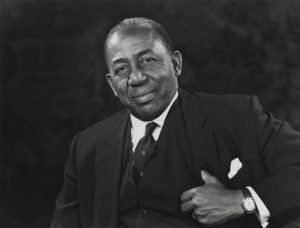
(Image: UK Parliamentary Archives)
Learie Constantine (Baron Constantine of Maraval and Nelson) (1901-1971) was a West Indian and English county cricketer, barrister, broadcaster, campaigner against racism, and the first black Peer in the United Kingdom.
He served as Trinidad’s High Commissioner in Britain, and later on the Race Relations Board.
During World War Two, he worked as a welfare officer for the Ministry of Labour and National Service, assisting West Indian munitions workers and West African seamen in Liverpool. He was appointed president of the League of Coloured Peoples and led negotiations with trade unions and employers in the cause of eliminating racial discrimination.
In 1943 he was in London to play in a Lords cricket match, and had booked a suite at the Imperial Hotel. On arrival with his family, they were refused accommodation, with hotel management stating that the American servicemen staying there would not put up with n****rs under the same roof.
This caused a major scandal, and was raised in the House of Commons by Labour MP Ben Riley. The following year, Learie Constantine won a landmark High Court legal action against Imperial Hotels Ltd, for breach of contract, and was awarded five guineas compensation.
In 1969, he was granted a Life Peerage and sat in the Lords on the crossbenches. By this time his health was in decline and he made just one speech, during a debate over Britain's entry into the EEC, in which he stressed the importance of trade with the West Indies and Commonwealth nations.
He passed away in 1971, aged 69.
#black history month uk#social history#uk politics#social justice#race relations#black british history#human rights#uk government#society
15 notes
·
View notes
Text
More excerpts:
1. In 1986, journalist Ashok Row Kavi penned an article about himself for Savvy Magazine, which became the first ‘coming out’ story from India.
2. .....but then in 1977, writer and math wizard Shakuntla Devi published “The World of Homosexuals”. Arguably the first of its kind in India, the book contained interviews with homosexual men, set against the backdrop of the Emergency years.
3. The ‘90s also saw the emergence ‘women-loving-women’ in India. This was when activist and academic Gita Thadani set up Sakhi, a women’s helpline and lesbian resource centre which facilitated cross-country networking between queer women.
4. “BOMGaY”, a 12 minute long film ...... was made in 1996. It follows several storylines of queer Indians ......remains an important part of queer cinema in India.
5. .....routinely denied accommodation by prejudiced landlords and homeowners......between 1998 and 1999, G.H.A.R (that’s Gay Housing Assistance Resource) was founded in Bombay by Sachin Jain. It set out to help LGBTQ Indians find safe living spaces...
6. Calcutta holds India’s first ever ‘Gay Pride Parade’ in 1999.
7. In 1999, a discotheque named Soul Kitchen in Delhi hosted the first “gay night”, giving members of the community the chance to meet each other in a safe space where they can be themselves.
8. The Kashish Mumbai Queer Film Festival – which is today one of India’s largest LGBTQ film fests – was first launched in 2010.
9. 2014 became a defining moment for positive legislations for the transgender community. It started in April, with the National Legal Services Authority judgement to formally recognise trans people as the ‘third gender’ on official government-issued documents.
10. In February 2017, the Ministry of Health and Family Welfare unveils a kit to promote good health and wellbeing, and – to everyone’s surprise – says that homosexuality is natural.
How Many Of These 93 Things Do You Know About India’s LGBTQ Movement? by Shambhavi Saxena, youthkiawaaz.com
July 13, 2017
#2018 decriminalization of all consensual sex under sec 377 of IPC#dear diary#long way to go#recent SC petition for legalisation of same sex marriage#getting literal chills listening to Dr. Meneka Guruswamy presenting her case#also 2022 ruling on expansion of definition of traditional family to atypical family
3 notes
·
View notes
Text

Name: Leo Torres
Birthday: 6th November 1972
Gender: Male, he/him
Sexuality: Bi
Ethnicity: Dominican/Indian
Quidditch Position: Seeker
Closest friends: Rowan, Charlie, Jackie (friends MC), Ben
Romances: Chiara(4th year to 5th year) Tonks(6th year to present)
(HPHM SPOILERS)
Bio: Leo was born in Ireland, with an older brother by 10 years, Jacob Torres. Like his brother, Leo was incredibly skilled with magic at even a young age, and a legilimens. Death Eaters heard about this, and decided to take him and raise him to be on their side, as he could be a powerful weapon. So at the age of 5, he was taken by Death Eaters, and stayed with them for little under a year until he was rescued by the order. While with the death eaters, he was looked after by Narcissa Malfoy, and his brothers close friend Regulus Black. Leo’s mother had hidden the realities of the war from him, so he had no idea what side he was on. Although his time there was less than pleasant, he had fond memories of Narcissa, she tried to protect him the best she could. After Leo’s second year of Hogwarts, he occasionally visited the Malfoys, babysitting Draco. After Leo had been rescued, his parents had a falling out and divorced. Not long after they moved to England, to be closer to his mothers family. Jacob disappeared when Leo was 6 years old, and Leo met Tonks and Charlie not long after.
Once Leo started Hogwarts, he was sorted into Slytherin alongside his new friend Rowan. Leo spent his whole first year trying to be himself and detach himself from people’s perception of his brother. Although that didn’t work, and once second year began, he started searching for cursed vaults as his brother had done. Dumbledore never truly tried to stop him or any of his friends, and by fourth year, Leo realised he was being used.
Finding Jacob didn’t go the way Leo had hoped. He was glad to see his brother again, but being stuck in a cursed portrait for 7 years was not good for Jacobs mental health. He had slowly gone mad in there, and it would take him a long time to readjust to society.
Rowan’s death hit Leo the worst, as he blamed himself. If he’d just joined R immediately, they wouldn’t have targeted his friends. This feeling became worse once he discovered his father was the leader of R. Leo considered joining R, momentarily, to protect his friends. But he thought himself a coward for even considering it for a second. Him and the circle of Khanna tried to defeat R, but they were unsuccessful. Although R did go into hiding once the ministry almost found them.
After school, Leo and Tonks became Aurors together, and moved in together not long after they graduated. After the Second Wizarding War began, Leo and Tonks joined the order. Unfortunately, after the mass breakout of Azkaban, Leo was sent in as spy on the death eaters. Narcissa knew he was a spy instantly, as he would never join the death eaters. She helped him, the best she could, although Leo was unable to go home to Tonks. He moved back into his childhood home, only seeing Tonks when he checked in with the order. In 1997, Leo and Tonks got married in secret, and by 1998, they had their first son, Teddy. At the Battle of Hogwarts, Leo was able to fight for the Order, and the death eaters trusting him was his advantage.
After the war, Leo tried to reconnect with his brother, as both their parents died during the war. Jacob was still struggling, but he was grateful for a connection with his brother.
12 notes
·
View notes
Text
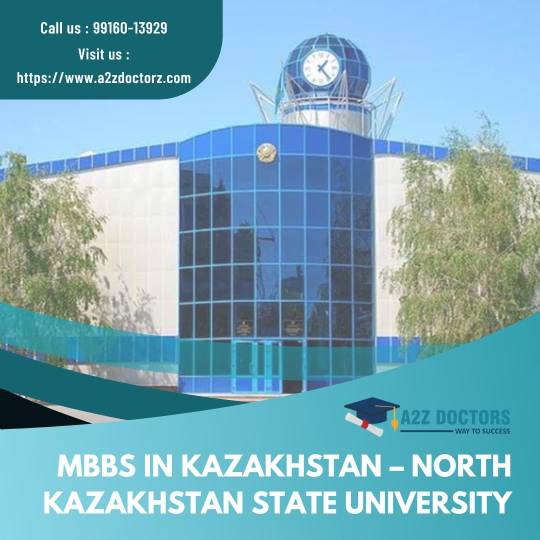
👉North Kazakhstan State University was established in 1937 and is 84 years old medical university located in Northern Kazakhstan.
👉M. Kozybayev North Kazakhstan State University (Petropavl) functions under the administration of Ministry of Education and Science of the Republic of Kazakhstan
👉 North Kazakhstan State University is recognized by MCI/NMC (National Medical Commission) as well as WHO (World Health Organization).
👉Indian boys and girls are provided accommodation on separate floors or separate hostels with complete separation.
👉Indian mess facility is available in all hostels of North Kazakhstan State University where they can have breakfast, lunch & dinner.
👉Students can choose 2/3/4 seater rooms which have with study tables & chairs, beds, bed-sheets, wardrobe, lamps,
👉Being a 84 years old medical university of Kazakhstan, NKSU (Petropavl) witnesses a good number of admissions from India.
👉Affordable and manageable Admission fees.
👉Call us: 99160-13929
👉 Visit - https://www.a2zdoctorz.com/product/mbbs-in-kazakhstan-north-kazakhstan-state-university/
📧 [email protected]
#A2ZDoctors#careercounseling#counselling#MBBS#MBBSAbroad#MBBSCareer#education#MBBSCounselling#CareerAdvisor#CareerConsultant#Admissionguidance#Admissionprocedure#Counsellingprocedure#NorthKazakhstanStateUniversity#Kazakhstan
2 notes
·
View notes
Text
Indian health authorities have halted all production at the main factory of Maiden Pharmaceuticals near New Delhi after its cough syrups were linked to the deaths of dozens of children in Gambia.
Anil Vij, the home minister of India's northern Haryana state, said authorities inspected the Maiden facility four times this month and found 12 violations of good practices.
Maiden Pharma sells its products domestically as well as exports to countries in Asia, Africa and Latin America.
"Keeping this in view, the entire production of the company has been banned and notice has also been issued," Vij said.
Maiden Pharma has two other manufacturing plants in Haryana state.
What is the drug company accused of?
The World Health Organization (WHO) released a report last week saying that cold and cough syrups manufactured by Maiden Pharma may be linked to the deaths of at least 66 children in Gambia.
The WHO said that laboratory analysis of four Maiden products showed they had "unacceptable" amounts of potentially life-threatening contaminants that can seriously damage kidneys.
The Gambian health minister, Ahmadou Lamin Samateh, said over the weekend that the number of children who died from severe kidney damage had risen to 69.
The WHO also issued a medical product alert last week, asking regulators to remove the Indian company's goods from the market.
The drug company's director has denied the accusation to the Indian press.
The Gambian police, in a preliminary investigation report on Tuesday, said that the children's deaths from kidney damage were linked to cough syrups made in India, without naming the company.
Police added that the medicinal syrup was imported via a US-based company.
India's Health Ministry said last week it was informed about the WHO findings last month and it was waiting on results of tests of all four Maiden products from a federal laboratory.
India was not licensed to sell the drug domestically, but was only allowed to export them to Gambia, the Indian Health Ministry added.
3 notes
·
View notes
Text
A Pandemic Tragedy on Brazil’s Lago Verde
A dispatch from the Amazon: A beloved leader was the first Indigenous person in Brazil to die of Covid—a loss entwined with her people’s fight for sovereignty.
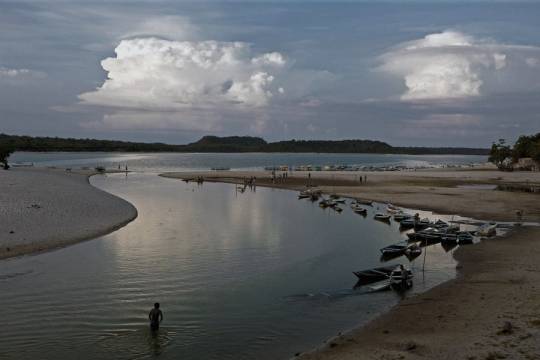
She died on March 19, 2020. The wake went on until dawn. Many people, including the elderly, came to spend the night watching over the body of Dona Lusia dos Santos Lobato. She was 87. The Indigenous leader, whose life story is inextricably linked with the struggle for the rights and recognition of the Borari people, was beloved in her village, Alter do Chão, Brazil, along the banks of the Tapajós River in the western state of Pará.
Dona Lusia died from Covid-19, which generated trepidation and fear. Relatives and others who’d been in close contact with her were quarantined, but the statement confirming the fact, by the Pará State Department of Public Health, also gave rise to a sense of mistrust among family members. They were reluctant to believe the state, that her death was the result of the new coronavirus.
Dona Lusia was the first Indigenous person to succumb to the disease in Brazil, but because she didn’t live in a village recognized by the National Indian Foundation (Fundação Nacional do Índio, or FUNAI), the governmental body responsible for mapping and protecting land traditionally inhabited by Brazil’s Indigeonous people, her death is not included in the statistics collected by the Ministry of Health.
The pandemic has been particularly brutal for Amazonian indigenous groups. The people who live in these areas generally lack health care resources, and tourism didn’t slow down enough to control the spread of the virus. By mid-2020, the rate of Covid deaths among them was 247 percent higher than the rest of Brazil. Had their lands been recognized by the Brazilian government, allowing them more power to decide who comes inside their territory, their experience of the pandemic likely would not have been so dire.
Continue reading.
#brazil#coronavirus#covid 19#environmental justice#politics#brazilian politics#indigenous rights#mod nise da silveira#image description in alt
10 notes
·
View notes
